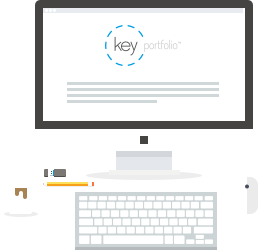This article has been updated for the 2025/26 tax year.
An umbrella employee’s guide to UK income tax and NI
9 minutes to read

Everyone who lives and works in the UK is liable to pay income tax and National Insurance (NI). At first glance the system sounds pretty complicated, particularly as a contractor. Admittedly it’s not the most exciting topic and I wouldn’t recommend testing it out as an ice-breaker at your next party, BUT if you’re new to the UK system or just want to polish your existing knowledge, you’ve come to the right place to have just that discussion. This guide has been written especially for contractors who are employed by an umbrella company in the UK, but much of it applies to others too.
Go and grab yourself a nice hot drink and a biscuit (I recommend an Oreo) and meet me back here where we can go through it…
…back? Great! Let’s get started.
Your earnings
Let’s begin by clarifying that you pay tax and NI on your earnings. Your earnings include your gross salary, holiday pay, sick pay and maternity/paternity pay.
Don’t get confused between your gross salary and the daily/hourly rate that your recruitment agency pays for the work that you do – your gross salary is just one part of that rate. The rate also includes other elements such as the umbrella’s margin and the apprenticeship levy. For more information we recommend you learn how your take-home pay is calculated.
As your employer, your umbrella company is responsible for deducting tax and NI from your earnings and paying it to HM Revenue and Customs (HMRC) on your behalf, using a system called Pay As You Earn (PAYE).
The amount of tax and NI that has to be deducted is set by the government. The Chancellor of the Exchequer is the one who announces changes to tax or NI, usually in the Autumn Budget, and they normally come into effect at the start of a new tax year. In the UK, the tax year runs from 6th April – 5th April, so we’re currently in the 2025/26 tax year.
The rest of this article goes into more detail about income tax and NI.
National Insurance
What is National Insurance?
National Insurance (NI) is used by the government to fund state benefits. You pay NI to build up your entitlement for State Pension and other benefits like maternity allowance, bereavement support and contribution-based jobseeker’s allowance.
It’s been around in some form since 1911 but was expanded in the 1940s. Back then, NI contributions were flat-rate and recorded as stamps affixed to a contribution card. But today contributions are earnings-related and deducted from your income by your employer.
How much National Insurance will I pay?
There are different classes of National Insurance contributions. As an employee, you pay Class 1. Your contributions are deducted from your earnings by your umbrella company, who will pay them to HMRC on your behalf.
You pay National Insurance when your earnings exceed £242 a week, but only if you are aged between 16 and State Pension age. Your contribution is calculated as a percentage of your earnings. You pay:
- 0% of earnings under £242 a week
- 8% of earnings between £242-£967 a week
- 2% of earnings over £967 a week
Your umbrella company will give you a payslip each time you get paid, and it will show how much NI has been deducted.
Everyone has a National Insurance number, which is used as your unique reference number for the UK social security system throughout your life. It helps HMRC make sure your tax and NI contributions are recorded correctly against your name. You can start work without a National Insurance number, but you must apply for one straight away.
Income tax
What is income tax?
Income tax is the main form of personal taxation in the UK. It’s been around for a long time – since 1799 in fact, when Prime Minister William Pitt introduced it as a temporary measure to fund the Napoleonic Wars.
The income tax you pay is your contribution to the ‘spending pot’ the government uses to fund the UK’s infrastructure, education, defence, pensions and services such as the police and the NHS. Income tax is due on most types of income such as wages or income from all self-employment but it also applies to bonuses, pensions, dividends from investments, interest on savings and rents received as a landlord.
Like NI, your income tax is deducted from your employment earnings by your umbrella company, who will pay it to HMRC on your behalf.
How much income tax will I pay?
Most people living and working in England, Wales or Northern Ireland will be taxed as follows:
- 0% on earnings up to £12,570
- 20% on earnings between £12,571 and £50,270
- 40% on earnings between £50,271 and £125,140
- 45% on earnings above £125,140
20% tax is known as basic rate, 40% is higher rate and 45% is an additional rate.
Scotland has a different system.
The personal allowance
As you’ll see above, you usually won’t pay income tax on all of your income. That’s because nearly everyone is entitled to a personal allowance, which means that a certain amount of your earnings each year are paid to you without being taxed.
Generally speaking, everyone gets the same personal allowance. The amount is set by the government and usually changes each tax year. At the moment, most people have a personal allowance of £12,570. If your annual earnings don’t exceed your personal allowance, you won’t pay any income tax at all.
Your personal allowance is given to you in equal portions throughout the year, so that by the end of the tax year you have received your full allowance. For example, if you’re paid weekly, your personal allowance is equal to £242 a week. If you’re paid monthly, it’s £1,048 per month.
When you earn more than your personal allowance, a percentage is deducted as income tax. The percentage you pay depends on your annual earnings and your tax code. Higher earners pay a higher percentage of tax on their income – this is a way the government tries to make income tax fair for everyone.
The system we’ve explained here is how things work for most people, but not everybody. For example, your personal allowance may be lower than normal if you earn over £100,000 or you owe income tax from a previous year. If your personal allowance is higher, it could be because you have claimed certain allowances such as Marriage Allowance.
In short, the amount of tax you pay ultimately depends on your individual circumstances. So how does your employer know how much tax to deduct?
Your tax code
Everyone who works in the UK has a tax code, and this is what tells your employer how much tax to deduct. Your tax code is either set by HMRC or allocated by your employer using rules set by HMRC.
Here’s how that works…
When you start a new job, your new employer will ask if you have a P45 form from your last job. This is a certificate given by an employer to an employee at the end of their employment. It confirms what their tax code was when they finished working for that employer. If you have one, give it to your new employer and they’ll use it to allocate you a tax code.
If you don’t have a P45, your employer will ask you to complete a ‘starter checklist’ which is another way they can determine what tax code you should be on. Sometimes they’ll ask you to complete this even if you do have a P45, just as back-up.
Your tax code depends on your circumstances. It is usually made up of a few numbers and a letter – if you multiply the number by 10, it will normally tell you what personal allowance you’ve been allocated. The most common tax code this tax year, for example, is 1257L (S1257L in Scotland or C1257L in Wales), which tells your employer that your personal allowance is £12,570.
Your tax code can change during your employment. For example, at the start of a new tax year, your tax code will likely be updated to reflect the new personal allowance. If your circumstances or tax records change, you’ll receive a new tax code.
Cumulative and non-cumulative tax codes
There are two different types of tax code: cumulative and non-cumulative. Most people are on a cumulative tax code such as 1257L. You can identify a cumulative tax code because it does not include ‘W1’ or ‘M1’. A cumulative code means that tax is calculated on your overall year-to-date earnings. The tax due on each payment is determined after taking into account any tax you’ve already paid this year and how much of your tax-free personal allowance has been used.
If you take a break from working to go travelling, to look after your family or if you have a quiet month, any unused personal allowance will roll over to future weeks. If you start working again later in the year, you’ll have more personal allowance to use and fewer earnings subject to tax, so you may get a bumper pay day.
If you see M1 or W1 attached to your tax code then you’re on a non-cumulative tax code, meaning the tax you owe is calculated on your earnings in that pay period only. This means the tax due on your earnings is determined in isolation – without looking at how much tax you’ve already paid. In other words, your personal allowance doesn’t roll over when unused, as it does with a cumulative tax code. As a non-cumulative tax code only looks at that isolated pay period, you could end up overpaying tax. HMRC can look into changing this for you, and if it becomes a cumulative tax code before the tax year changes, you may get any overpaid tax repaid automatically alongside your wage. As a last resort, you’ll be able to claim it back from HMRC once the tax year ends.
It’s really important that you’re on the correct tax code to avoid overpaying or underpaying tax. You will find your tax code on your payslip and you should check that matches the personal allowance you should be getting.
Phew! You’ve made it to the end. Hopefully, that brief overview has answered a few burning questions but if you want to know more, check our support centre where you’ll find information on specific tax codes, statutory benefits and more on tax and National insurance. If you’re already a Key Portfolio employee YAY! Our team of tax experts are on hand to help you, just get in touch. If you’re new here, welcome! We’d love to have you on board.
These figures are correct for the 2025/26 tax year.
![]()




